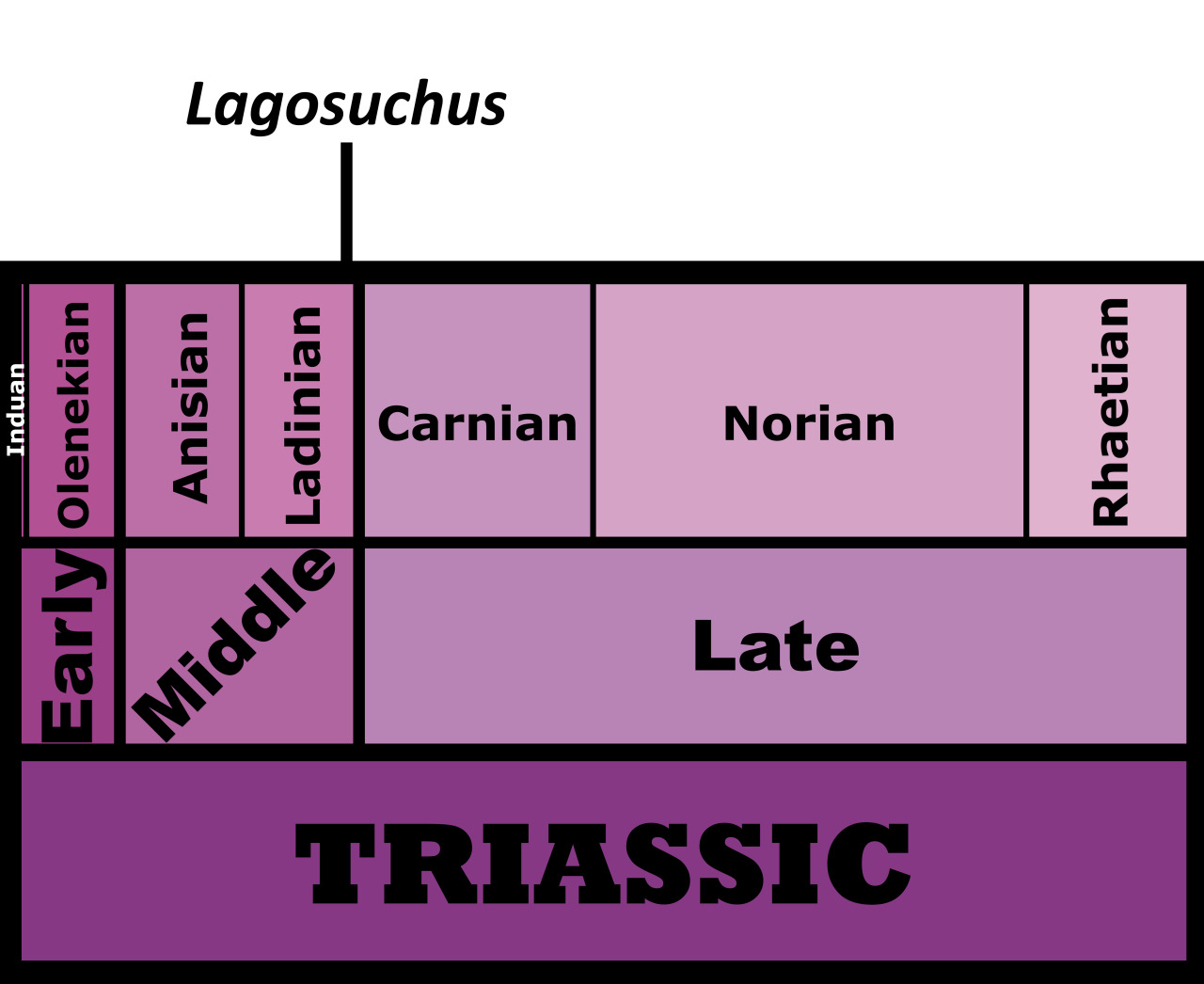
By José Carlos Cortés
Etymology: Rabbit Crocodile
First Described By: Romer, 1971
Classification: Dinosauromorpha
Status: Extinct
Time and Place: About 238 million years ago, in the Ladinian age of the Middle Triassic


Lagosuchus is found in the Chañares Formation of Argentina

Physical Description: Lagosuchus was an early Dinosauromorph, aka the group that includes dinosaurs and all their closest relatives. Thus, Lagosuchus is one of many early archosaurs that showcase the origins of all dinosaurs! Lagosuchus isn’t known from particularly good remains, but it does show it was a lightly built, agile animal, which was probably bipedal and spent most of its times on its toes. At about 30 centimeters in length, it was around the size of a ferret. Its legs were amazingly long, and its toes were too, giving it good speed. It had an almost-erect posture – without the open hip sockets of dinosaurs proper, it couldn’t hold its legs directly underneath its body, but it almost could. Its forelimbs are a bit more murky, though it seems likely that Lagosuchus moved on all fours most of the time, switching to two legs when it needed to move quickly from place to place. Being an early dinosauromorph, it would have had some covering of protofeathers, though how much is a bit of question.
Diet: Lagosuchus was probably an omnivore, given the fact that early dinosaurs probably came from omnivorous origins
Behavior: Lagosuchus would have been a moderately active animal – close to a warm-blooded metabolism but not quite. As such, it probably would have spent most of its time on the move, hunting for food or searching for grubs and possibly plants it could have eaten. Lagosuchus could have used its speed to run away from predators, which were very common in its environment; and, of course, running after its own food!
It is uncertain if Lagosuchus was a social animal, or if it took care of its young; but it seems likely for the latter at least.

By Ripley Cook
Ecosystem: The Chañares Formation was a middle triassic microcosm of the explosion of evolution occurring in the Triassic, showcasing a wide variety of animals evolving in the aftermath of the Permian mass extinction. This was a low lying lake system, filled with horsetails, ferns, and some nearby conifer trees. It was also very warm, though not as warm as locations closer to the equator. There were many kinds of animals – large predatory pseudosuchians that would have hunted Lagosuchus such as Gracilisuchus, Luperosuchus, and Tarjadia; other Avemetatarsalians such as Marasuchus, Pseudolagosuchus, Lewisuchus, and Lagerpeton; the carnivorous almost-mammals Probainoganthus and Chiniquodon; the herbivorous almost-mammal Massetognathus; giant Dicynodont herbivores like Dinodontosaurus and Jachaleria; and finally the vaguely-crocodile-like Proterochampsids Gualosuchus, Chanaresuchus, and Tropidosuchus. A fascinating community indeed!
Other: Lagosuchus isn’t a particularly well known dinosauromorph; fossils assigned to it at one point that are well known, Marasuchus, have been given their own genus. It is possible that Lagosuchus is, thus, closer to dinosaurs in relationship than we think just on its own without evidence from Marasuchus. More studying of these fossils is necessary to come to better conclusions.
~ By Meig Dickson
Sources under the Cut
